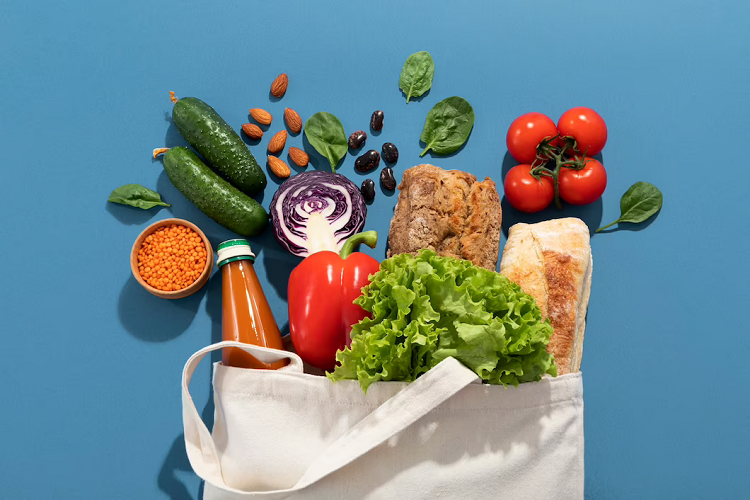In the United States, millions of low-income families struggle to put food on the table every day. Fortunately, there are many resources available to help such families get access to free groceries. These resources include government food assistance programs, food banks and pantries, and charity organizations. This article provides a comprehensive guide to all of these resources, including eligibility requirements and application procedures.
Government Food Assistance Programs
Supplemental Nutrition Assistance Program (SNAP)
The Supplemental Nutrition Assistance Program (SNAP) is the primary federal government-funded food assistance program in the United States. Millions of people currently use it to help pay for their groceries. This program used to be known as Food Stamps but was renamed SNAP.
To be eligible for SNAP, applicants must meet several conditions. Firstly, people applying for benefits in their household must be able-bodied and between the ages of 18 and 60. They also need to have or apply for a Social Security number and be either a U.S. national, U.S. citizen, an American Indian born in Canada or Mexico or have status as a qualified alien.
Emergency Food Stamps
The government also offers emergency food stamp programs that are federally funded but state-administered. These expedited SNAP applications can be processed in a matter of a few business days. The program can help low-income families (or someone in crisis) who has unexpectedly run out of money for the month and needs help paying for groceries.
Special Supplemental Nutrition Program for Women, Infants, and Children (WIC)
The Special Supplemental Nutrition Program for Women, Infants, and Children (WIC) is a federal government assistance program that provides nutritious foods, groceries, and commodities to supplement the diets of low-income pregnant, postpartum, and breastfeeding women. The program in effect gives them free groceries in the form of formula so they can feed newborns, children up to five years of age, as well as infants.
The WIC program is administered by the Department of Agriculture through state and local government health departments. Eligibility for any type of food aid is based on an applicant’s total household income and their overall nutritional risk as determined by a qualified health professional or doctor.
Nutrition Services Incentive Program (NSIP)
The Nutrition Services Incentive Program (NSIP) is a federally-funded program that provides healthy foods to low-income seniors. The program provides participants with monthly food packages that are designed to meet their nutritional needs. The packages include a variety of items such as canned fruits and vegetables, cheese, cereal, and juice.
The Emergency Food Assistance Program (TEFAP)
The Emergency Food Assistance Program (TEFAP) is a federal program that helps supplement the diets of low-income Americans by providing emergency food and nutrition assistance. The program is designed to help those who are in need of food due to an emergency situation, such as a natural disaster or job loss.
- Nutrition Services Incentive Program (NSIP): This is a program designed to provide seniors with free healthy groceries. The program provides low-income senior citizens with access to nutritious food that meets their daily dietary requirements. Seniors who are unable to leave their homes to shop for groceries or prepare meals can benefit from this program. Eligibility is based on age, income, and other factors. Seniors who are eligible for the program can receive a monthly box of nutritious food that meets their dietary requirements.
- Meals on Wheels: This is a program that provides home-delivered meals to senior citizens who are unable to leave their homes. The program provides a hot meal, as well as a bag of groceries, to seniors who are homebound due to illness, disability, or age. Meals on Wheels is a national program, but it is implemented locally. To find out if you or a loved one is eligible for the program, contact your local Meals on Wheels provider.
- Free breakfast and lunch for students: The National School Lunch Program provides free or low-cost meals to school-aged children from low-income families. Children who are eligible for the program can receive free breakfast and lunch at school. To qualify for the program, a family’s income must be at or below 130% of the poverty level. The program is available in all 50 states and the District of Columbia.
- Charity-run food pantries: There are many charity-run food pantries that provide free groceries to low-income families. These pantries are run by organizations such as churches, non-profits, and community groups. The food provided by these pantries is donated by individuals and organizations, and is usually non-perishable items such as canned goods and pasta. Some pantries also offer fresh produce, dairy products, and meat.
- Home-delivered groceries for the elderly or disabled: Some non-profits and community organizations offer home-delivered groceries to senior citizens and disabled individuals who are unable to leave their homes. Volunteers deliver a box of groceries to the individual’s home on a regular basis, usually once a month. To qualify for the program, an individual must meet certain eligibility requirements, such as age, income, or disability status.
Non-profit organizations and charity programs across the United States offer various forms of food assistance to those in need. These programs are especially important for low-income families, seniors, and individuals experiencing homelessness.
Non-profit grocery programs and charity food assistance programs
The Salvation Army, a non-profit agency with locations in almost all states and counties, offers free emergency groceries and food assistance programs to millions of individuals each year. Most branches run a free food bank, a soup kitchen for the homeless and households with no money, and/or offer a pantry on site. The Salvation Army partners with other local agencies, such as food banks, government agencies, distribution centers, and charity organizations, to provide additional support. Special holiday meals, groceries, and food baskets may also be offered.
Every county in the United States is supported by a Non-profit Community Action Agency. The case management staff and volunteers at these agencies provide extensive information on resources that give out free groceries that are available to those in need. The specialists can often help qualified low-income families apply for free food, meals, government commodities, and other assistance. These agencies can also help individuals apply for programs such as the SNAP food stamps program and the Women, Infants and Children program.
Feeding America is the nation’s largest anti-hunger, non-profit organization. They partner directly with hundreds of local food banks, pantries, and soup kitchens in all states to provide free food, groceries, and nutritional items to the poor or homeless. Many of these locations participate in other government programs and can offer referrals for services such as SNAP food stamps, free home-delivered meals for seniors and disabled individuals, grocery store discount programs or coupons, and the Commodity Supplemental Food Program.
Churches also provide food assistance to qualified individuals and families. Many churches distribute free food, groceries, and meals to the homeless and unemployed. Some churches run their own food banks and pantries, while others fund and partner with other agencies.
Several national non-profit charity organizations provide groceries, vegetables, fruits, and free food and nutritional assistance to those who need help. A focus is on families living under poverty guidelines and parents with children.
In addition to these programs, there are also free or discounted food box services available. The Meals on Wheels program provides free or low-cost home-delivered meals, groceries, or boxes of food to seniors, disabled individuals, and the homebound. Non-profit and charity organizations also offer low-cost grocery boxes, providing food at about 50% off the retail price and available in unlimited quantities.
Almost every town, city, and county has free emergency food banks, pantries, and grocery programs for low-income families. Many of these locations are volunteer-run and depend on the generosity of donations from the community. There will be a wide variety of free groceries provides, perishable items, nutritional workshops, and many more benefits. While some pantries provide groceries daily, many others have limited hours.
Conclusion
In conclusion, there are many resources available for low-income families and individuals who are in need of free groceries. Government programs such as SNAP and WIC, as well as charity-run food pantries and non-profit organizations, offer assistance in the form of free groceries, meals, and other resources. Eligibility for these programs is often based on income, age, disability status, and other factors. If you or someone you know is in need of assistance, it’s important to research the available resources and reach out for help.
FAQs
- Can I receive free groceries if I am unemployed?
Yes, there are many resources available for individuals who are unemployed and in need of assistance.
- What is the income eligibility requirement for SNAP?
The income eligibility requirement for SNAP varies by state, but typically a family’s income must be at or below 130% of the poverty level.
- Can I receive assistance from multiple programs?
Yes, it is possible to receive assistance from multiple programs, depending on your eligibility and the resources available in your area.
- How do I find a local charity-run food pantry?
You can search online for food pantries in your area, or contact local non-profit organizations for more information.
- Is there a limit to how many times I can receive assistance from these programs?
Eligibility for assistance programs is often determined on a case-by-case basis, and varies depending on the program and the individual’s circumstances.




